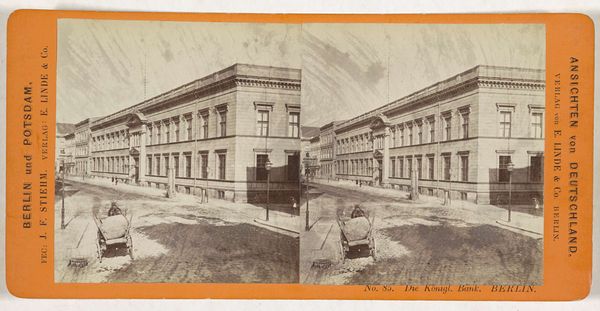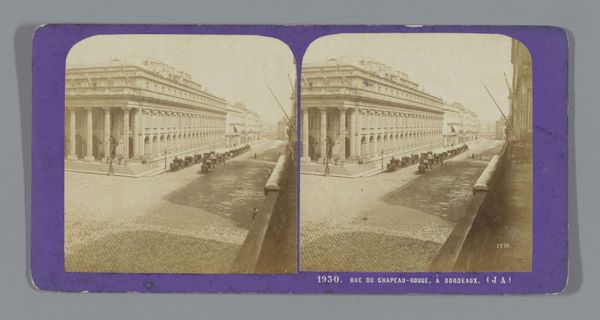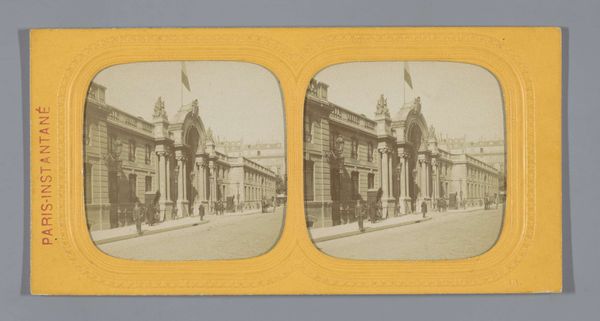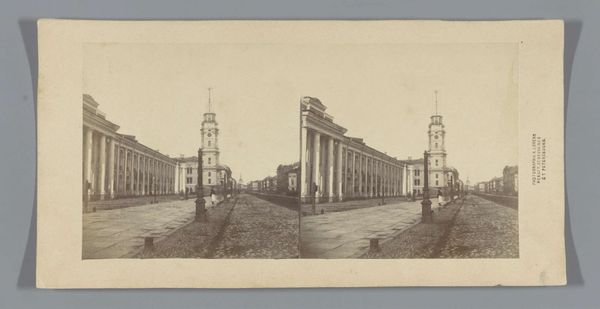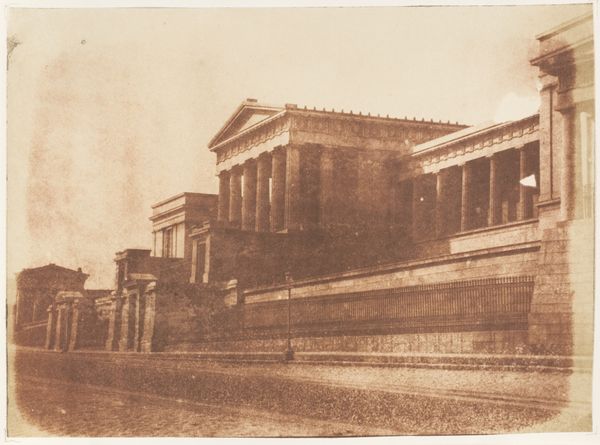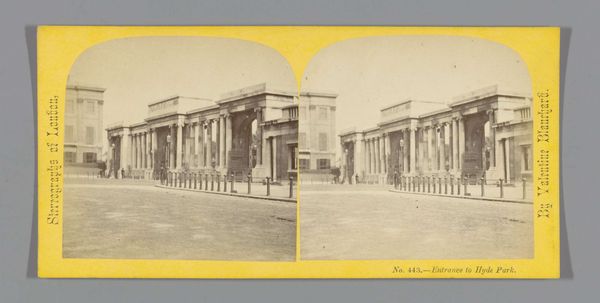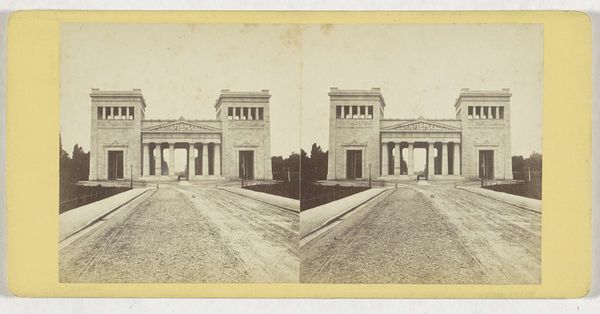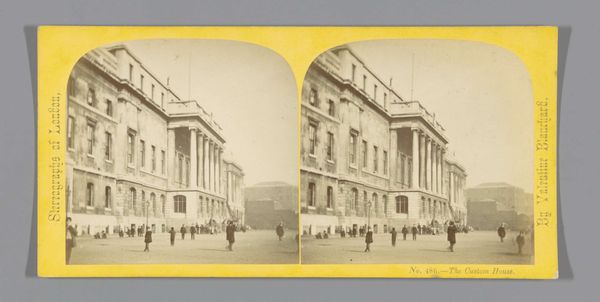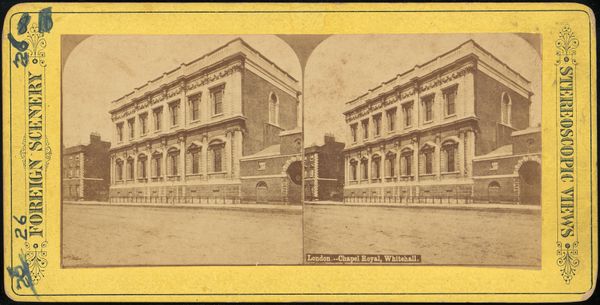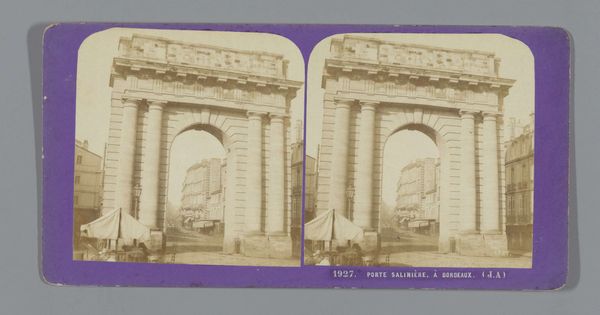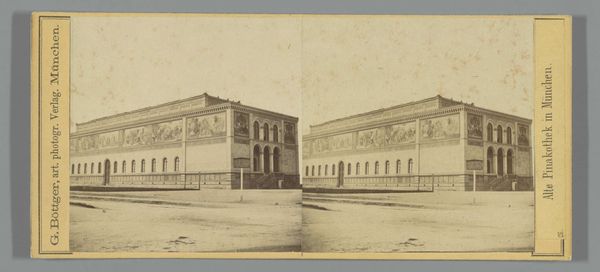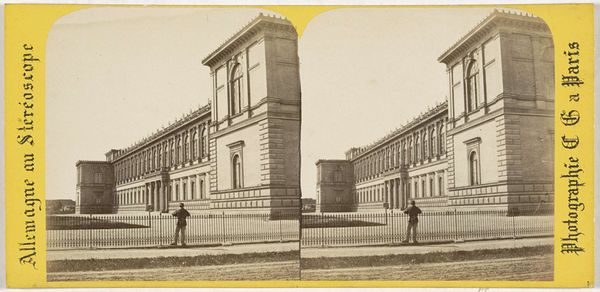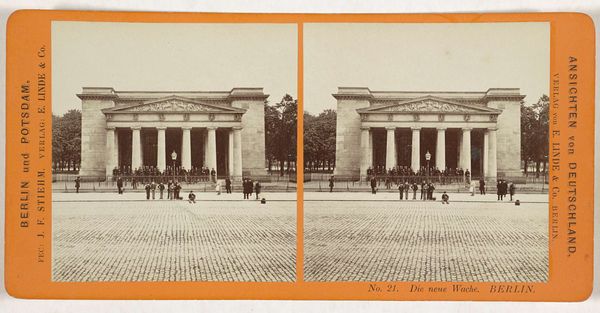
photography
#
photography
#
cityscape
#
building
Dimensions: height 85 mm, width 170 mm
Copyright: Rijks Museum: Open Domain
Curator: Before us is a stereoscopic photograph taken by Jean Andrieu sometime between 1862 and 1876, titled "Exterieur van het Paleis van Justitie te Bordeaux"—Exterior of the Courthouse in Bordeaux. What are your initial impressions? Editor: My first thought goes to the texture; I immediately see the weight of the stone contrasted against what must be the cobblestone street and cast-iron fencing. It’s about structure, isn’t it? Very material. Curator: Absolutely. But it's not just about material presence; consider the late 19th-century context. Courthouses, particularly in France, symbolized civic order and state power—institutions often built atop pre-existing power structures that marginalized various groups. So this image raises the question: who has access to justice and on what terms? Editor: And I’d add: By what means was this monumental structure fabricated? I want to know about the labor involved, from quarrying to construction. This is a photograph, so what was the process involved in its production? It makes me think about access to art, too—who is the presumed viewer of these stereoscopic cards? Curator: Exactly. Stereoscopic images were a technology intended for broad distribution but they certainly spoke to a burgeoning bourgeois audience. What did they seek to extract, to consume, from images of institutional power and architectural grandiosity? I think this image can be interpreted through Foucault's concepts of power. The imposing facade is more than architectural; it embodies disciplinary power, visible but intangible, that seeks to shape societal norms and behaviors. Editor: Thinking materially again, consider how architecture shapes the city and daily life. It’s not merely a backdrop, but actively shapes it by the use of resources, its sheer physical presence… Curator: Indeed. This photograph reveals how spaces are politically charged and layered with symbolism that touches upon identity and power. Editor: So from raw materials to the final commodity viewed in someone's parlor…it’s all interconnected. Interesting to consider. Curator: A beautiful way to approach this image—revealing how the threads of history, representation, and lived reality entangle. Editor: A nexus of materiality and ideology—an architectural portrait that invites more than one interpretation.
Comments
No comments
Be the first to comment and join the conversation on the ultimate creative platform.
